... more not-so-random motions ...
2013 - Portugal and Spain
by Dolores Cellier
09/25. We departed via USAir via Philly.
09/26. Arrived at LIS in Portugal at sunup the next morning. Waited 1+1/2 hours for baggage carousel because "the dog thinks someone's bag is interesting". A bit jet-lagged 24 hrs after leaving LAX. Taxi to nearby bus terminal, then a nice bus ride to Óbidos, a small walled hill town with a castle - now the Pousada de Óbidos, where we stayed.
Our room was one of 3 located in the old crenelated towers, at the very top.
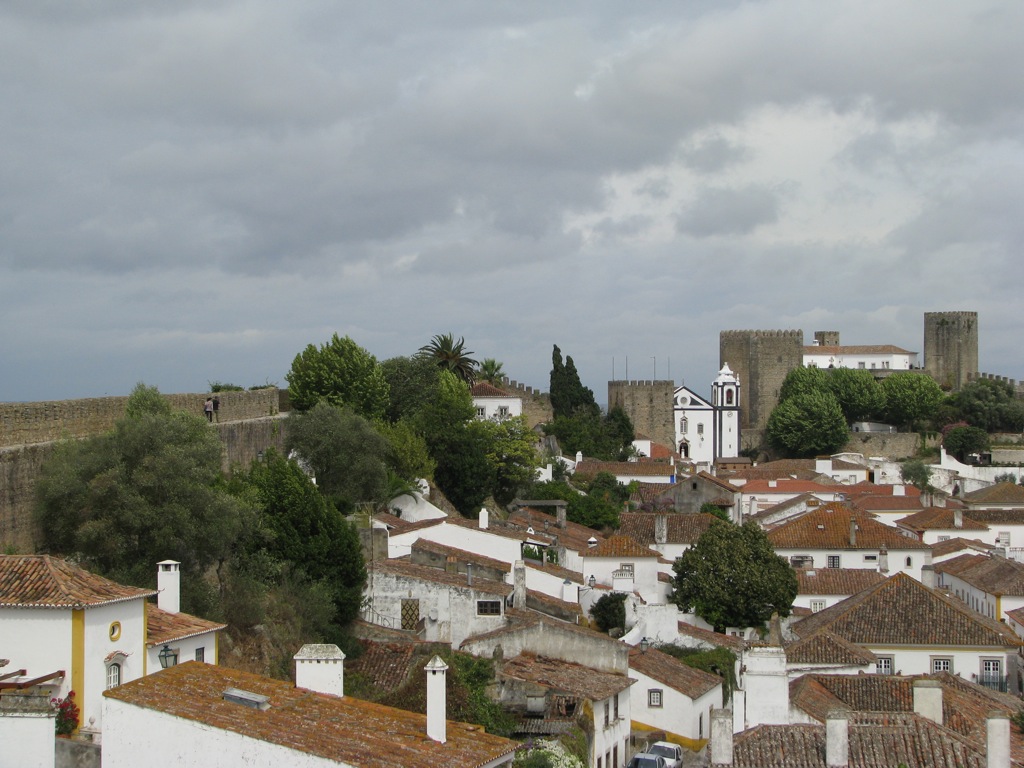
Here we were on the roof atop our tower ...
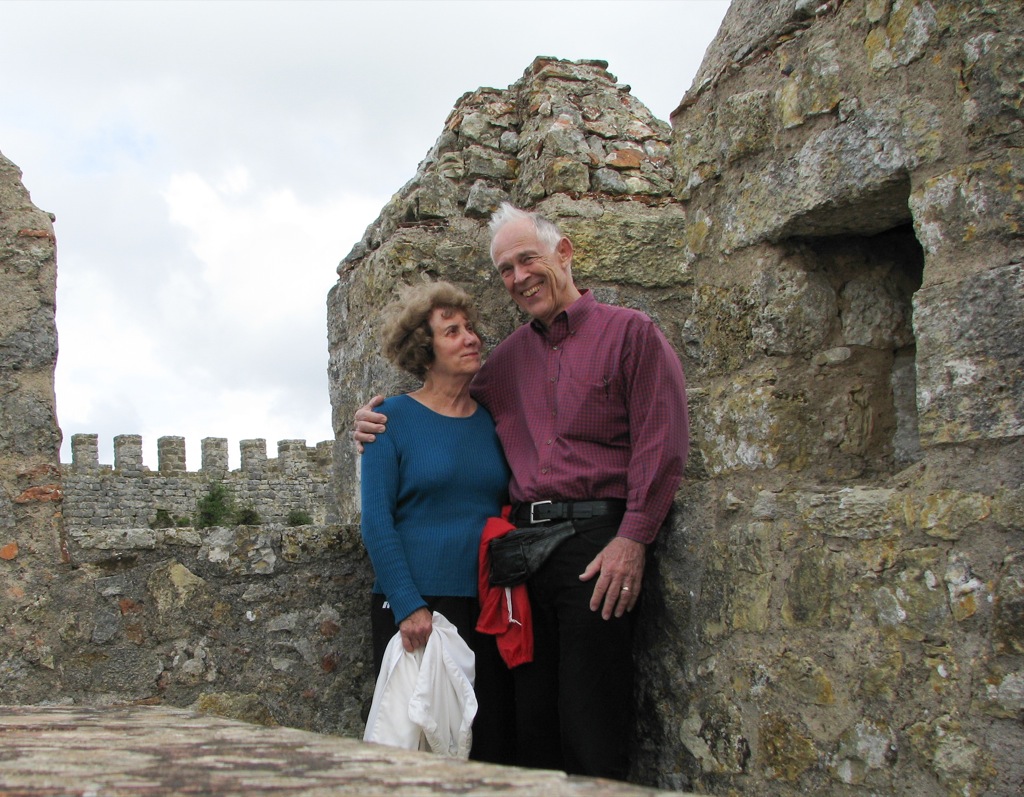
No elevators, rooms only for the fit and the mountain goats. Even our room had a loft with 14 steep steps to the bed area, not for sleep-walkers.
First morning, breakfast with a view ...

Breakfast and dinners in old castle were typical Portugese and wonderful; seafood is plentiful and prepared "tipico". Explored the village, shops, and castle grounds ... soaked up some history that I'll not have to remember.
Then on to Lisbon by bus. Temps have been 70's with on and off showers every day ... good walking weather. Celebrated Al's birthday on the 3rd with dinner at Brasserie Flo which is unrelated to the French restaurant we have enjoyed in Paris. Beautiful and elegant, and glad he finally caught up to me. While in Lisbon attended a piano concert at Palacio Foz, and went the Oceanarium, which is huge and has aquariums and specimens from all the oceans of the world.
At Belem, visited the Maritime museum and the coach museum, lots of Portugal's history. While in Lisbon we stayed in the very modern hotel "Marques de Pombal" which is on the tree lined "avenida Libertad" with all the designer shops and the other tourists. Al always finds us restaurants off the tourist path, so that we can taste and feel non- touristy for awhile. Squid, clams, sardines, shrimp, all my favorites anyway.
We spent some hours climbing in Lisbon's large Castelo de São Jorge on the hilltop,
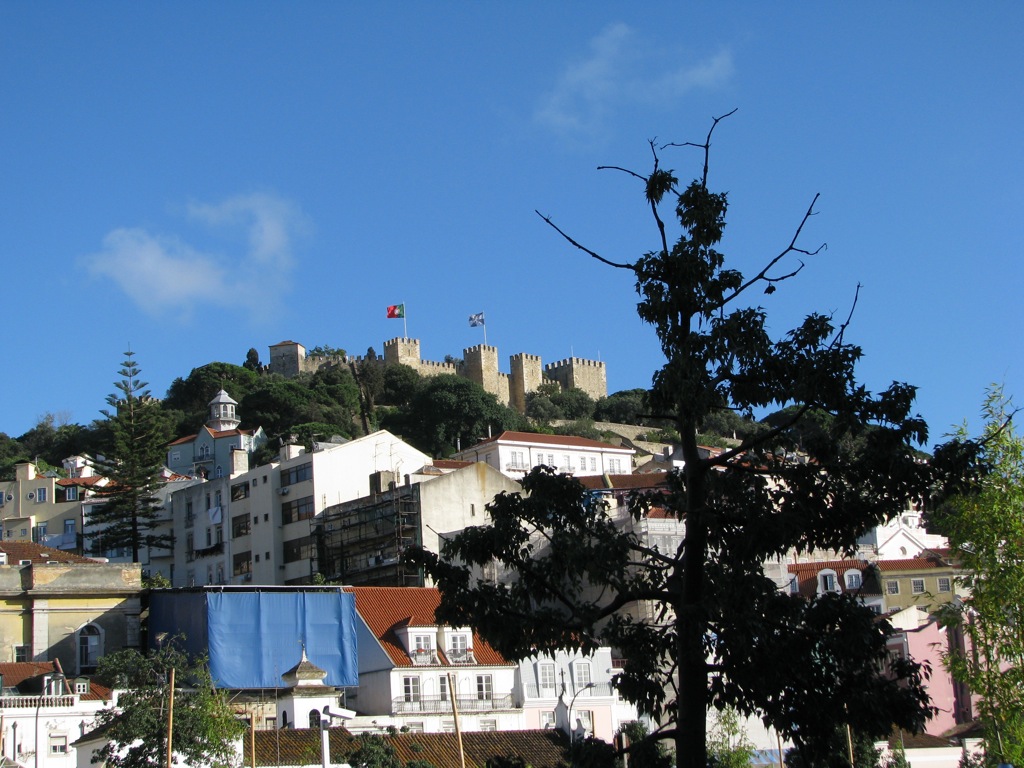
with panoramic views of the city ...

and enjoying its colorful flock of peacocks.
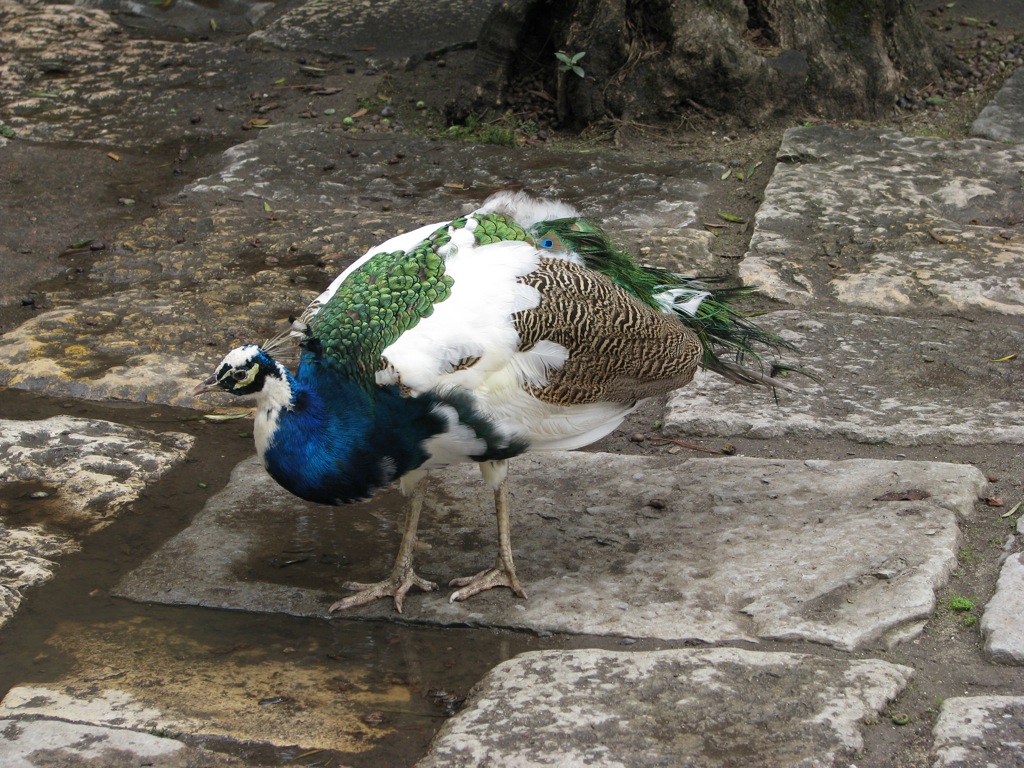
I had an old book of rules from the 70's giving the conversion rules from Spanish to Portugese, so Al scanned it into our iPads and we were able to use our Spanish and some Portugese; our pronounciation was getting good. Six days in Lisbon exploring on foot and by bus, then time to move on again.
10/4, here we are in the old walled city of Cáceres in the Extremadura region of Spain, staying in the Parador which is one of the 14th century fortified castles on the hill, converted to a luxury hotel.
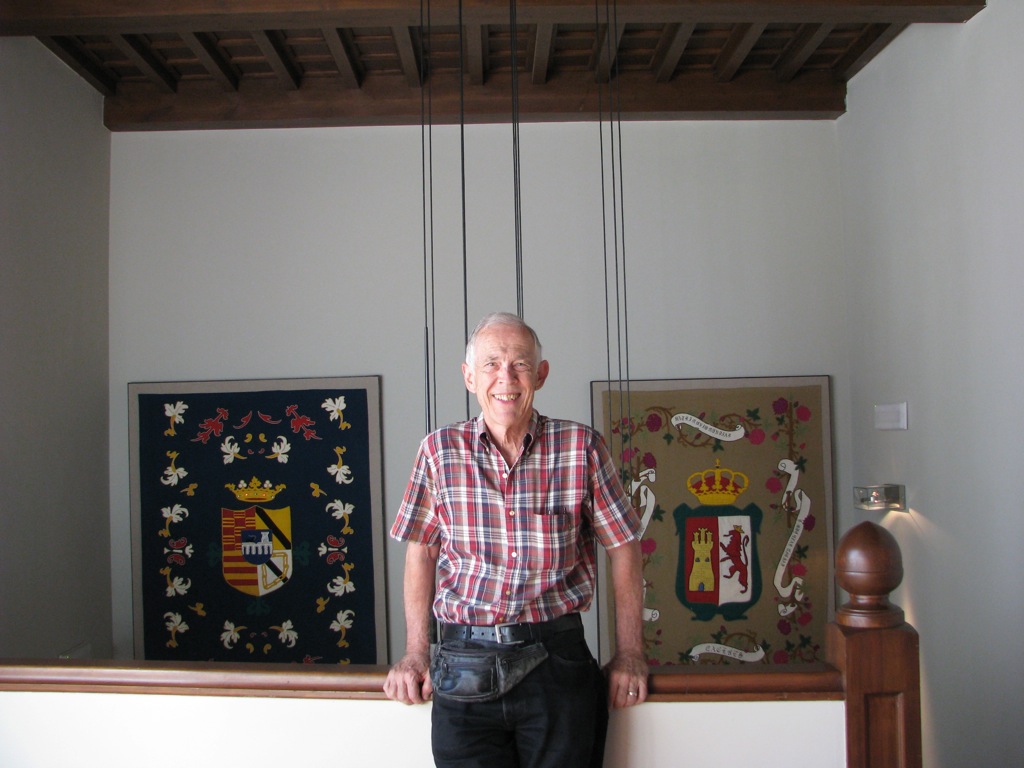
Spain, France and Portugal have converted a number of their historic castles, convents and monasteries into boutique hotels called Paradores, Chateaux, and Pousadas in each respective country. We discovered them in France some years ago, and also stayed in a series of them on our previous trips to Spain. They are always located on the highest hills of the region since their purpose was to be entirely self-contained, walled, and defensible. This also means they are usually far away from recent developments, and difficult to get to. The narrow streets are often impassable for cars and we have seen cars scrape their side mirrors as they try to get thru.
Al has learned it is easier to take public transportation and taxis, having almost got wedged in a rental car some years ago. What is striking to me is the juxtaposition of the old walls and hallways, antiques and accessories with the sleek modern amenities in the rooms. Ultra-modern European plumbing, flat screen tvs on the wall, WiFi, LED lighting, ... amazing!
The breakfast buffet was about 22 feet long containing all the foods that Spain is famous for; tortilla de papas, Iberian ham, fruits and vegetables, French pastries and even boxes of Post corn flakes (ugh). Spent the day touring the local museums, seeing architecture from roman times, Moorish influence, and the Jewish quarter. Last evening joined the locals for the "paseo", a before-dinner walk along the Plaza Mayor where everybody comes for a drink and to visit and socialize.

Being Friday night, the teens were out in small groups to see and be seen. We've had to adjust our eating schedule to the later hour. Dinners start earliest at 8:30 for tourists and continue till 11:00. Friday and Saturday nights, the Cáceres Blues Festival was in full swing right up the street - a real 'happening'.
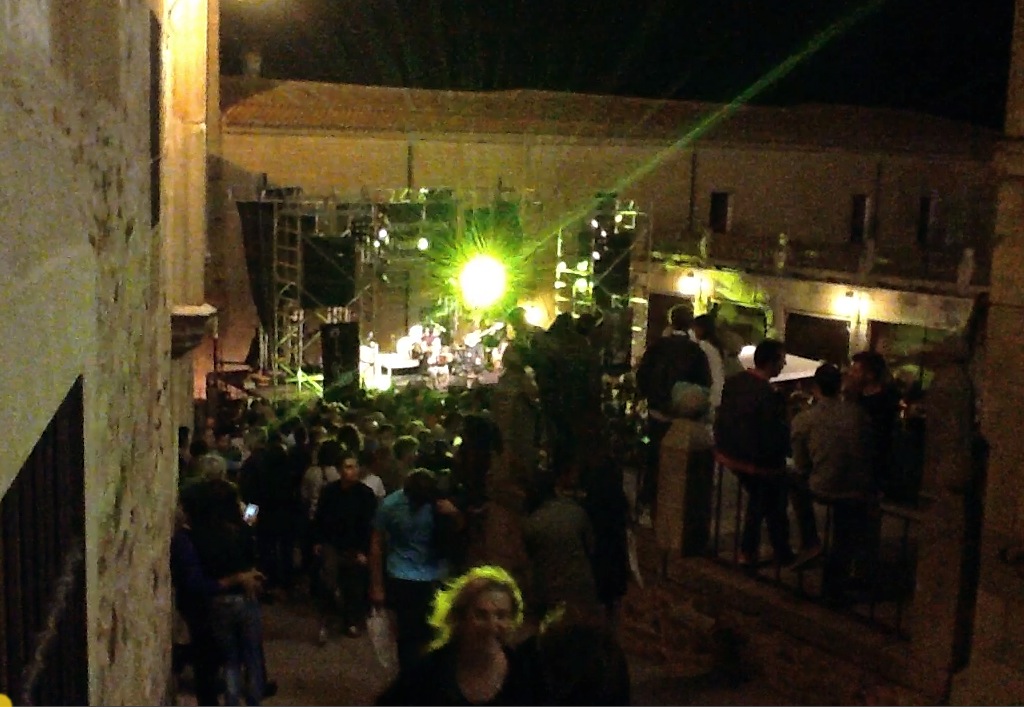
10/6. Traveled by luxury bus to Sevilla on Sunday afternoon. Good time to travel in these Countries since everything is closed in smaller towns since it is "family day". Staying in the oldest part of Sevilla which is the Jewish quarter in the Hotel de los Mercaderes. Explored the area; tapas and beer at the very old and beautiful Moorish mosque, then the Christian king's castle converted to a hotel, the Alphonse XIII.

Seems everything was Islamic or Jewish as they co-existed for centuries, then were taken over by Christians who built their churches and cities using the foundations and walls of the previous buildings. History here goes back to time of the Romans in the 3rd century.
Last night attended a Flamenco dance, guitar, and song presentation

after a late dinner; we're adjusting nicely. Today we visited the Alcazar and gardens for about 4 hrs, then tapas & beer, then siesta during heat of the day when all the shops are closed. Makes sense. Temps in the 70's until about 1300, then 80's until after 1700, when shops re-open and street life resumes till after midnight.
A real surprise in the commercial district, some blocks from the old-town area of our hotel - this huge modern elevated sculpture with a walkway on top! During construction they discovered Roman ruins which are preserved.
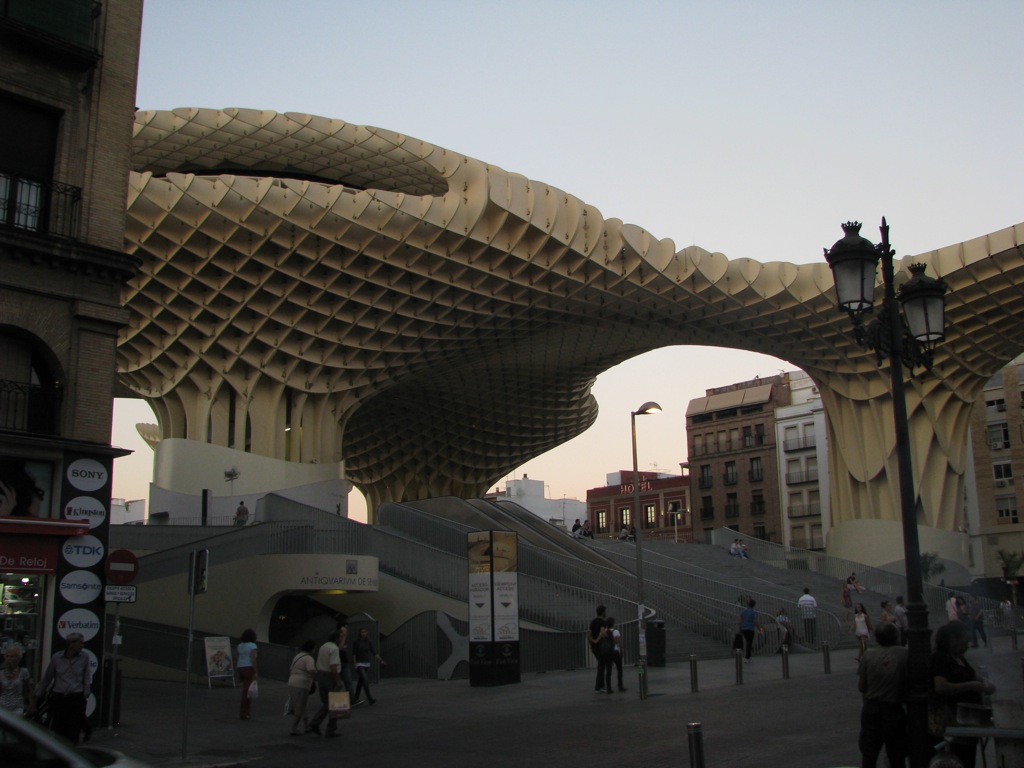
A great dinner that evening at a really nice restaurant, Baco, walls covered with classic tiles installed over 100 years ago. They have a beautiful bar area on the rooftop, too.
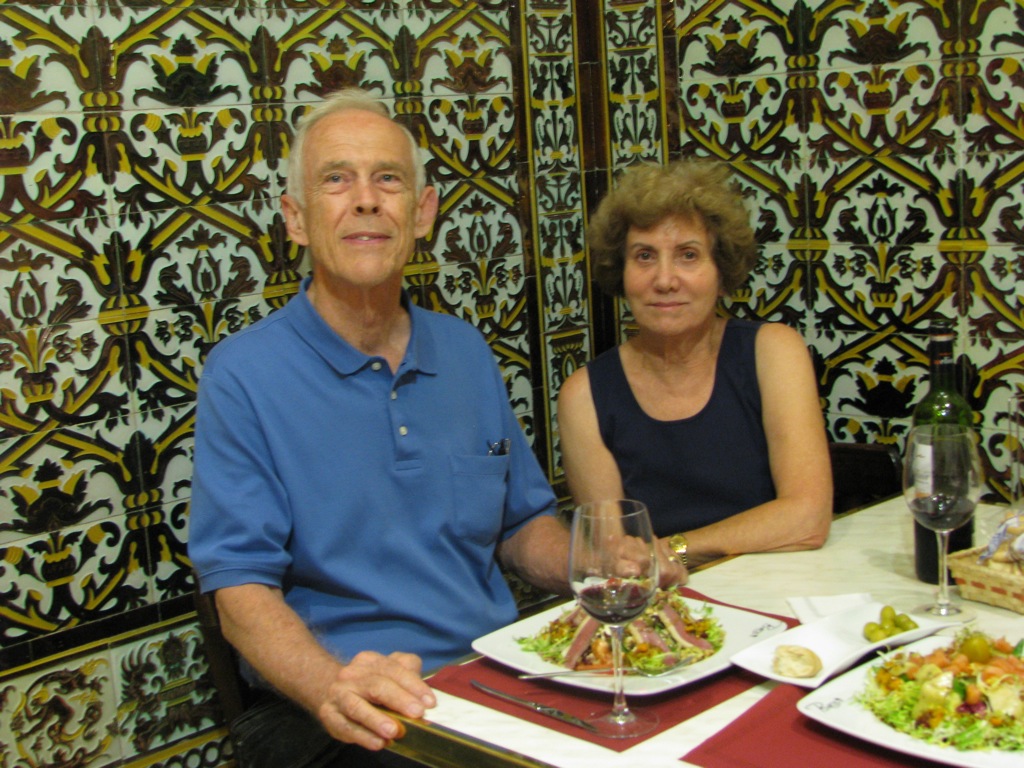

We are still walking and exploring 5-7 hrs per day; it is just broken up with afternoon quiet-time. I like it. One thing I noticed about the language here in Sevilla is that it has a harsh and angry sound, brusque and the women's voices sound deep even in ordinary conversation with each other. My imagination? I'll pay attention on the rest of the trip, but I don't think I'd noticed that before.
10/9 to 10/12 Have been in Ronda 3 days. Stayed at historic Parador located on the edge of the chasms

and "new" bridge that Ronda is famous for. Explored the old town, and a part of the new. Al fell in love with Ronda on our last visit here in 1998, and wanted to spend more time here. Below all around are the vineyards and various cultivated fields and orchards in the valley, and the mountains in the background ... just beautiful.
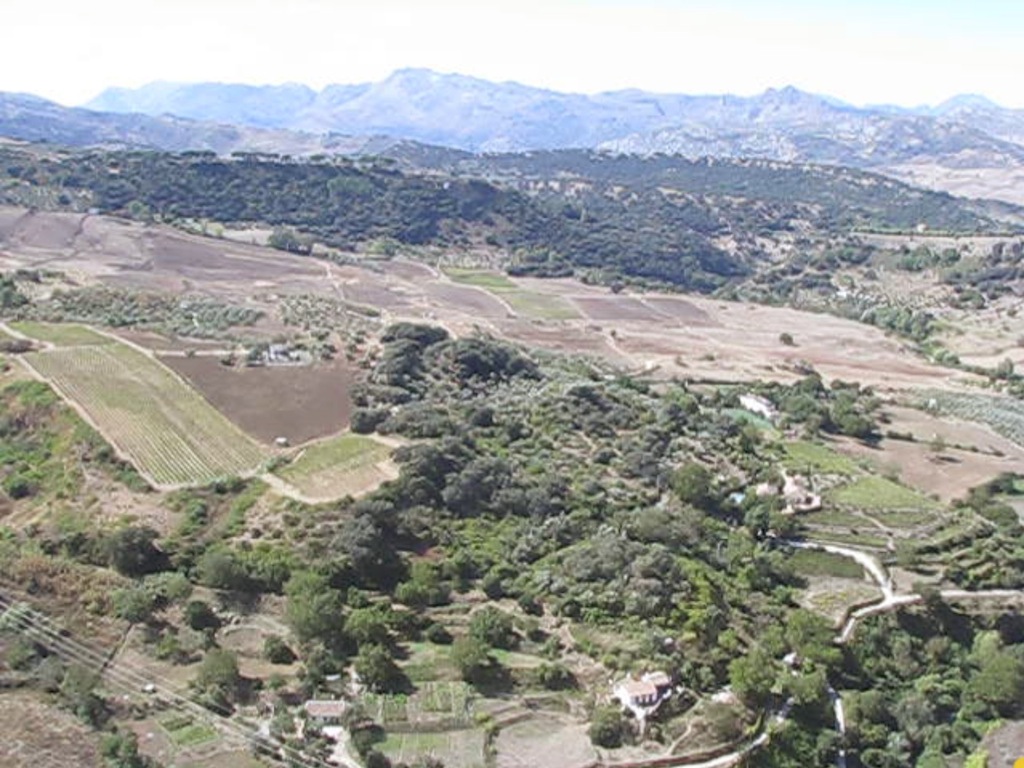
This was a favorite destination of the famous English poets when on their "grand tours" as well as Hemingway, and Orson Welles, who is buried here. We took lots of pictures because words can't do justice to the landscapes and soaring birds in the canyons.
We so far resisted buying some ceramics because of the weight and the continued travel, but at last stop we may succumb. We did buy a memento t-shirt each; they make us smile at home during a work-out. Also could not resist a couple of Italian made lightweight knit tops; so much for resisting temptation ... Ventured a day trip to Gibraltar on Thursday ... navigating was not so easy, as the train and bus systems are not coordinated (e.g., think LAX and the Green line). We used train, bus, taxi, and feet. And, pretty weird, walking across the international runway of Gibraltar.

Unfortunately, the transportation schedules did not allow time to go to the top of the rock.
Ronda has amazingly diverse and tasty local wine selections - like a Spanish Napa, but without the huge companies. Weather has been 70's in the mornings, then 80's late afternoons, just in time for siesta, sunny and bright. Now on our way to Córdoba today by train.
Arrived to Patios de Córdoba, a modern Eurostar hotel built over a Roman architectural ruin with glass walkways so you can peer down as you wait for the elevator ... very disconcerting. Dinner at Taverna Salinas around the corner which was wonderful, serving typical dishes from the region. Since Al and I try anything, we have had a food adventure and haven't met a Spanish wine we don't like. We've got into the habit of late afternoon beer and tapas to break up the exploring walks, then the local late dinners starting about 9 PM or so.
One of the most interesting sites in Córdoba is the Plaza del Potro,
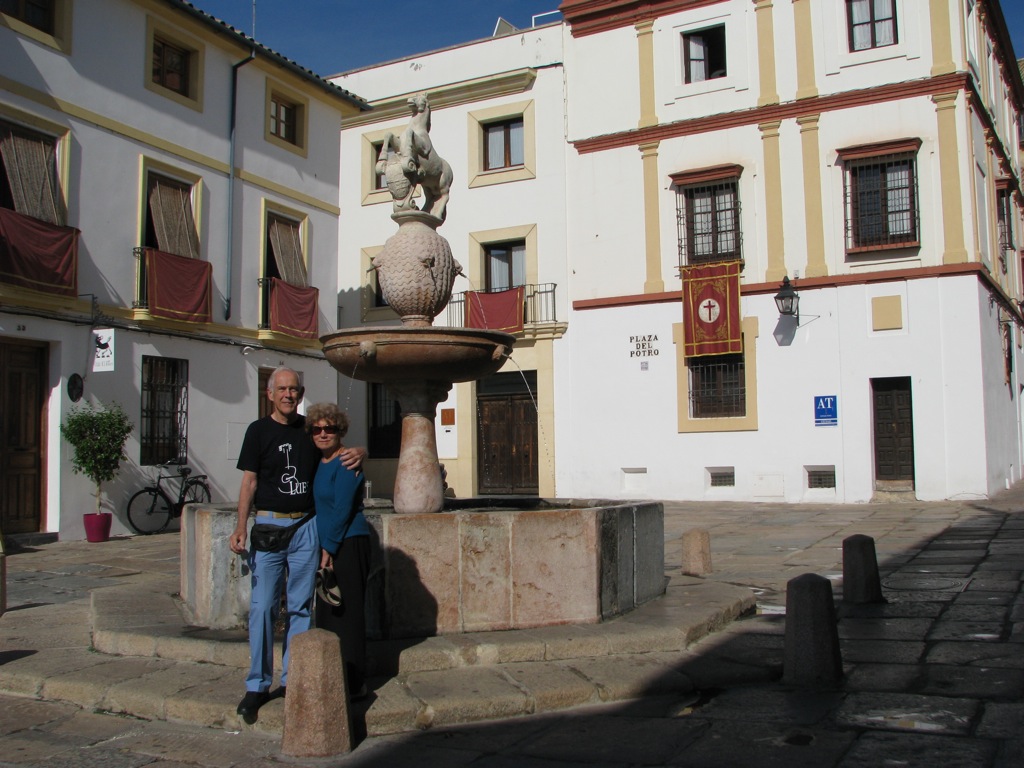
which hundreds of years ago was a horse-trading place. On the east side of the plaza is the former small posada, once an inn, now housing a museum with multiple, wonderfully executed interactive audio-visual displays and detailed maquettes - covering three dozen types of flamenco; Spanish musicians; and the posada itself.
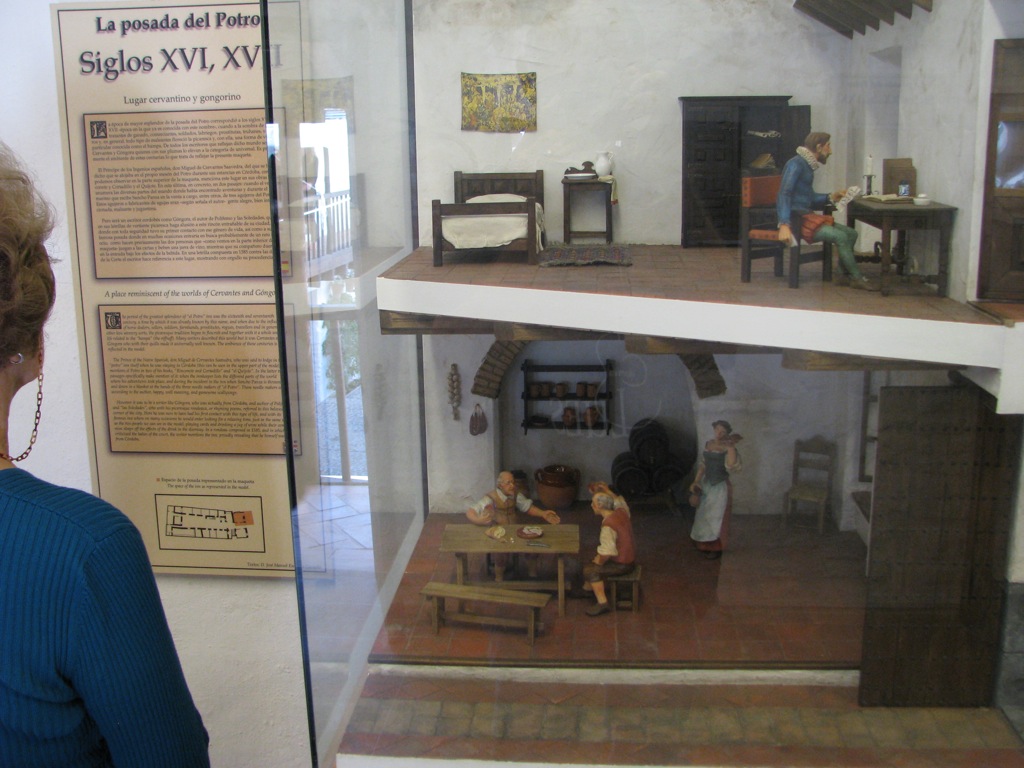
Córdoba has many ruins and monuments, some we explored on a previous trip. Al is into the architectural details of the ruins; I am more into people-watching. Seems the skinny jeans uniform is still prevalent with locals and tourists alike. Also impossibly high heels on platforms! Even on the cobbled streets! Although, the other uniform shoe here is the ballet flat, like it was in Paris last year. People throughout Spain and in Portugal have been normal size; meaning 50's normal, not 2013 U.S. normal.
Unfortunately, still a lot of smokers of every age group. No smoking inside of most buildings, but that just pushes the smokers outside the doors ... they don't as yet have smoke-free perimeters around doorways as we do here, but it'll come.
And by the way, there have been many shoe stores to explore along the way!
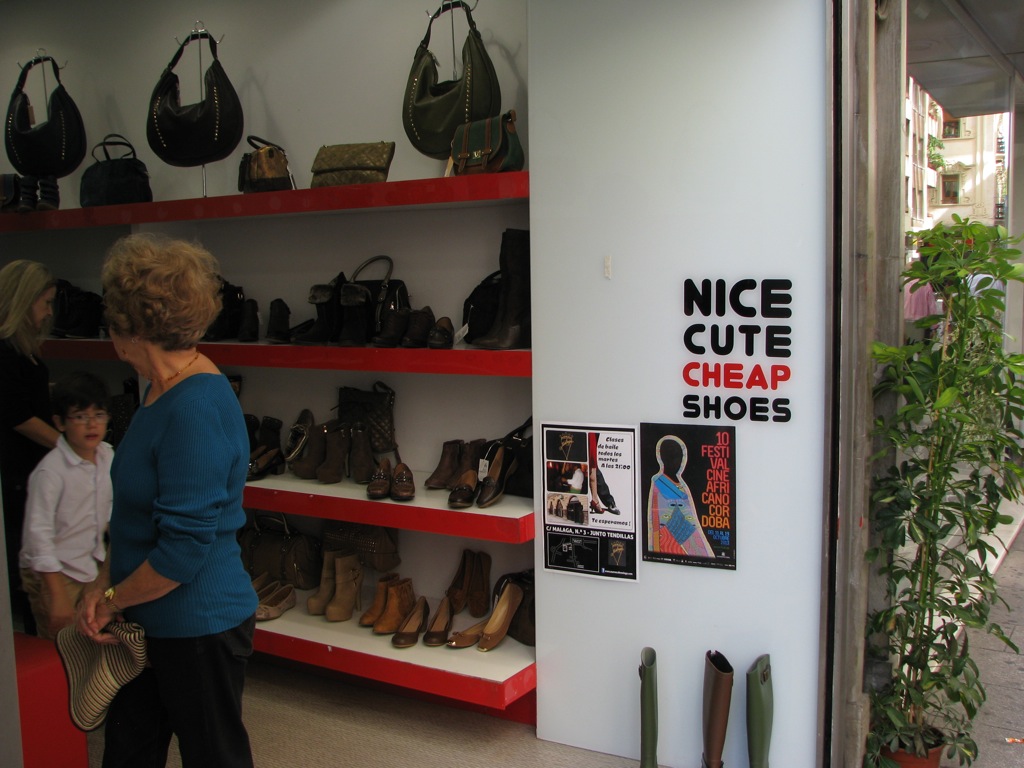
From Córdoba by train to Jaen - to the top of one of the highest hills outside the city, where the Parador and castle sit overlooking the groves of olive trees spread below. In every direction, olive trees - must be millions.

Breathtaking views in all directions, swallows darting and wheeling, then landing on their mud nests attached to the old castle walls. As we arrived, we found ourselves in the midst of a vintage sports car cross-country rally, about three dozen great cars, including a 1962 Corvette from Neuchâtel (Al's grandfather's birthplace).

This rally was one of the
Mille et Une Nuits Classic series which goes yearly to different places,
worldwide.
At the end of a VERY long hallway, we are in the largest suite #13, in which President De Gaulle once stayed on a visit.
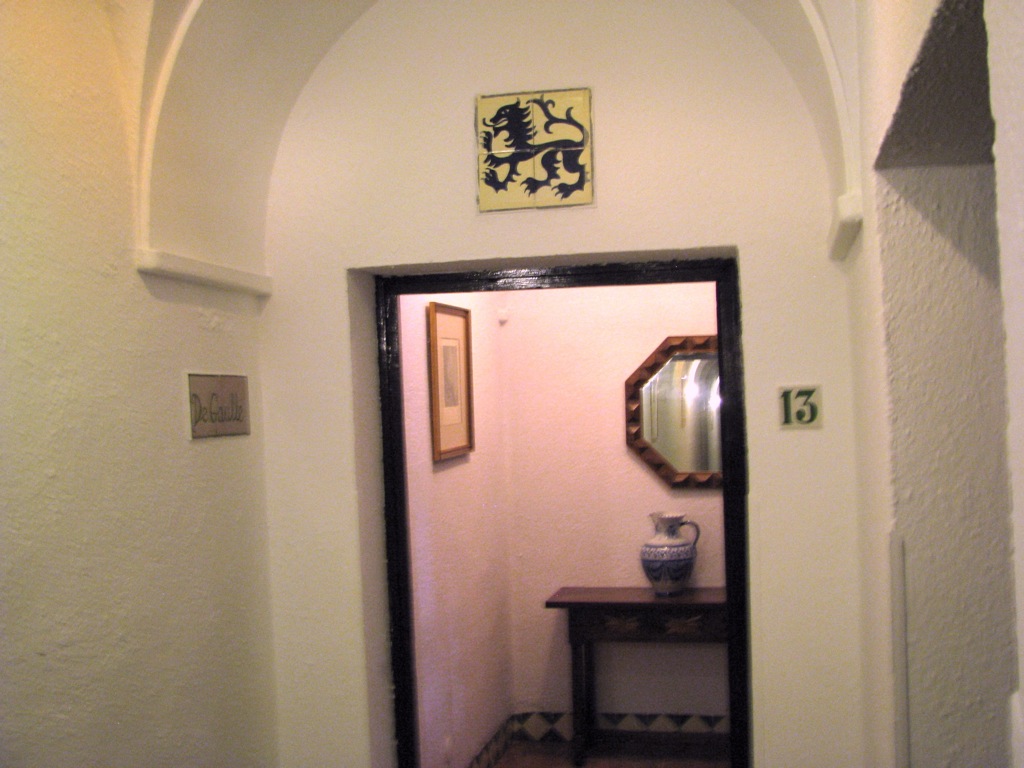

Two nights here just for a little r & r in a spectactular setting; 4 poster bed, wall tapestries, suits of armour in the lobby, thick stone walls, huge breakfast spreads and dinners in a grand old dining room ... like that.
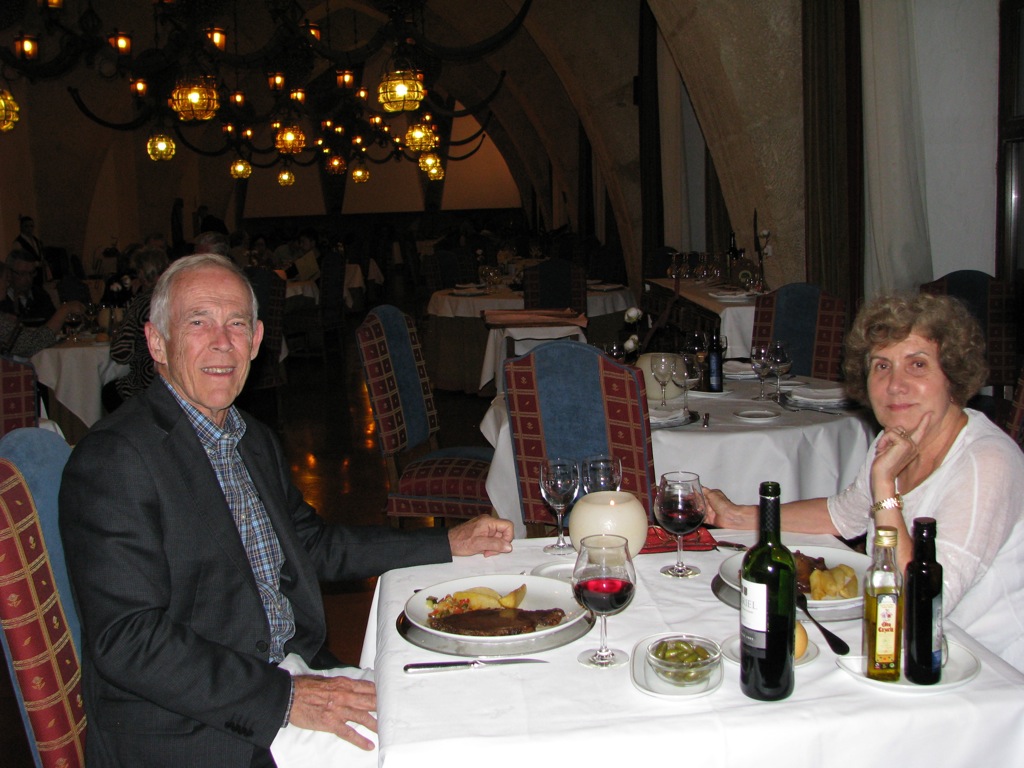
By train about 4 hrs into Madrid. This blog would not be complete without an example of Spanish ham - here is the "Museo de Jamon", a chain of ham-oriented deli/restaurants.

Hotel this time is in the Cortes area; we'll be here for a week renewing old acquaintances. Whoops! First old favorite place we looked for has disappeared. Restaurant Los Gabrieles, which had beautiful tiles and lovely memories has been closed for some years. We found Spanish websites describing the renovation of the treasured, century-plus-old tiles that line the walls - tile versions of Spanish master paintings in the Prado musuem.
But beautiful tiles are everywhere - here is just one example, at El Rincon restaurant about two blocks from our hotel.

And Dolores found her (tiled, of course) namesake taverna!

And, of course, as in many European cities, the architects, sculptors and artists have been productive over the years, so that there is wonderful statuary and sculpture everywhere you look.

The iconic old Telephone building is now a civic center with public spaces and multiple art displays and civic exhibits,
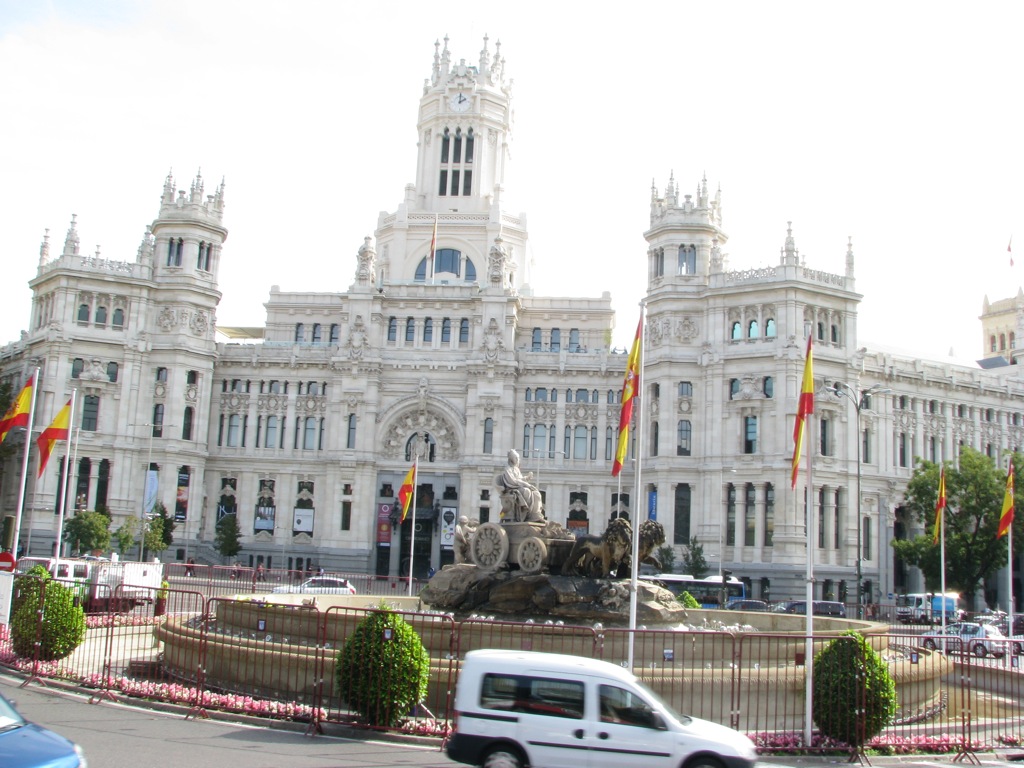
which we found quite absorbing. One of the most interesting art exhibits was a conceptual "time bank" that would loan time, like physical banks loan money. Also cool was a display of urban planning applications - sounds dry, but it was actually very thought-provoking. We were able to go to an upper level for a panoramic city view.
Here in Spain they allude to the "crisis" which is how they describe their last few years of economic downturn. It is not noticeable in the heavily traveled tourist areas around the famous monuments or in the adjacent hotels and restaurants, but venturing away from these areas we find closed shops, empty buildings ... etc. As usual, in the luxury parts of cities, the shops are beautiful and busy and the wealthy not noticeably affected; as was told to us by one of the employees in a custom design mosaic flooring shop. One whole day we walked thru the Salamanca district which is the Rodeo Dr. of the area. Same designer shops and over-the-top fashions which don't interest me much, but the windows and creative presentations do. Window displays here and in Paris are such far-out fun; maybe they are at home too, but because I rarely "shop", I don't know. Near our hotel was a "centro de sanidad" which turned out to be a public medical center, with offices of various specialties. Except for the very wealthy who elect private medical service and turn to the "public" system when their condition is very complex, these offices and care are accessible to everyone at no cost, at anytime. I, of course, asked a lot of questions which they were happy to answer about their system. Seems there is a movement - that is not popular - to "privatize" their health system and we witnessed a massive demonstration one evening, called by them a "manifestacion" against it.

Seems like USA and Spain are heading in opposite directions in thinking about health care, but one thing is sure: anyone wanting or needing care for diabetes has access to care, meds and equipment at no additional charges. We engaged several of our waiters in restaurants in conversation, and as in the U.S., are working very hard to support their families. One waiter told me he was a nurse in his country of origin, but although he spoke the language, he could not work as a nurse in Madrid. (Maybe licensing issues? Did not have time to find out).
We visited the Thyssen-Bornemisza museum, and Carol would be pleased that we saw the temporary exhibit of "Surrealism and the Dream" featuring Miro, Dali, Magritte, Redon, and others. Not our usual preference, but exploring out of our comfort zones. The cafeteria there had an interesting device at each table, an electronic signaling device to call the waitress, to call for the check.
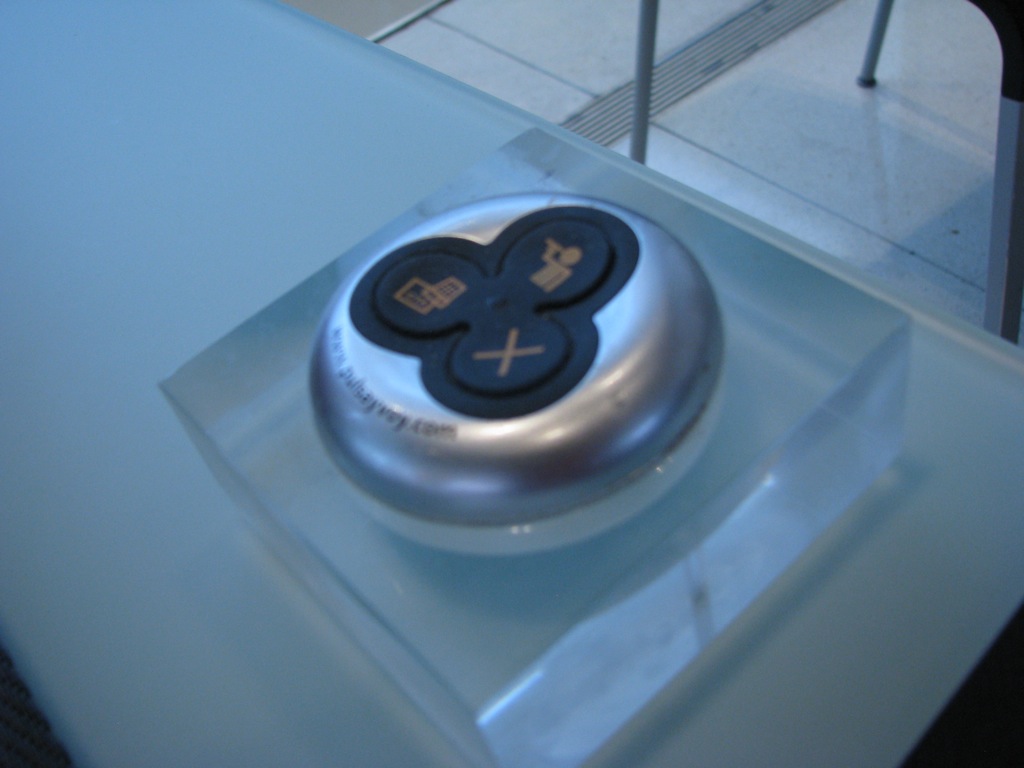
We passed on the Prado this time, since that has been an all-day visit on our previous trips. Also spent an afternoon at the Reina Sofia museum which was also modern art, and lamentably missed the Decorative Arts museum due to our translation error of the schedule. O well, next time.
On Sunday we visited the "Rastro" flea market. The antiques were not so impressive as on prior visits, and we were told that many dealers had closed shop. Still, as a mob scene, the market is a 'happening'.
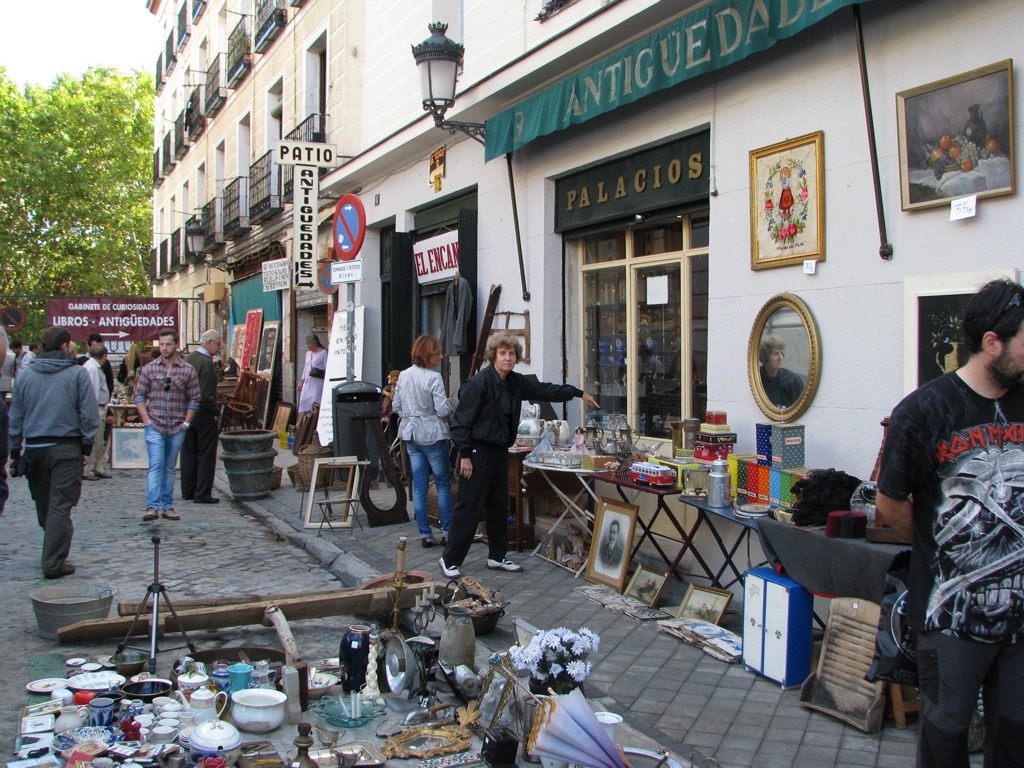

Have kept to walking thru different parts of the city for hours to explore and enjoy and Al never gets lost; he seems to be a real "homer pigeon" wherever he is. Only bought two new pairs of shoes this trip, let quite a few get away ... but don't really need ANY. Spanish shoes are beautifully made, like the Italian ones. We enjoy Madrid and adopting temporarily this way of life; meaning tapas and beer in the middle of the day, and dinner with a full bottle of wine about the time we're falling asleep on the couch at home.
The husky, harsh sounds of the Spanish I heard in the Sevilla area were not so noticible in Madrid, but still there more than I had noticed in previous trips. Most of the TV talking heads spoke so fast it was hard to follow every word and the dubbed English- to- Spanish movies and TV programs were a riot. In Spain they use "vale" in conversation as we use OK, and France uses "d'accord" to signal agreement. "OK" works in any language, so I used that most of the time.
Another area that surprised me on this trip, both in Portugal and in Spain, was the lack of fresh flower arrangements. In the luxury hotels and restaurants, the arrangements were "faux" or dried. Flower shops on the street were all artificial silk flowers; it was hard to find a fresh flower shop. In the open markets there were flowers and plants for sale, but limited to those specific days and times. Very puzzling for a lush, agricultural area with wonderful climate patterns. In Madrid, the Palace Hotel, now a Westin, did have a large fresh arrangement, and yes, I do touch them all to check. Madrid also had some colorful plantings around some monuments of petunias and such, but overall noticeably absent. Is this a result of the economy? I would have liked to know more about that. I think after a month I was probably missing my garden and flowers.
So, after a month of our being in our "alternate universe cocoon" immersed in language, sights, customs, and foods that are novel and different we arrive home. It feels good, and to paraphrase Jack Kornfield: "after the adventure, the laundry."
